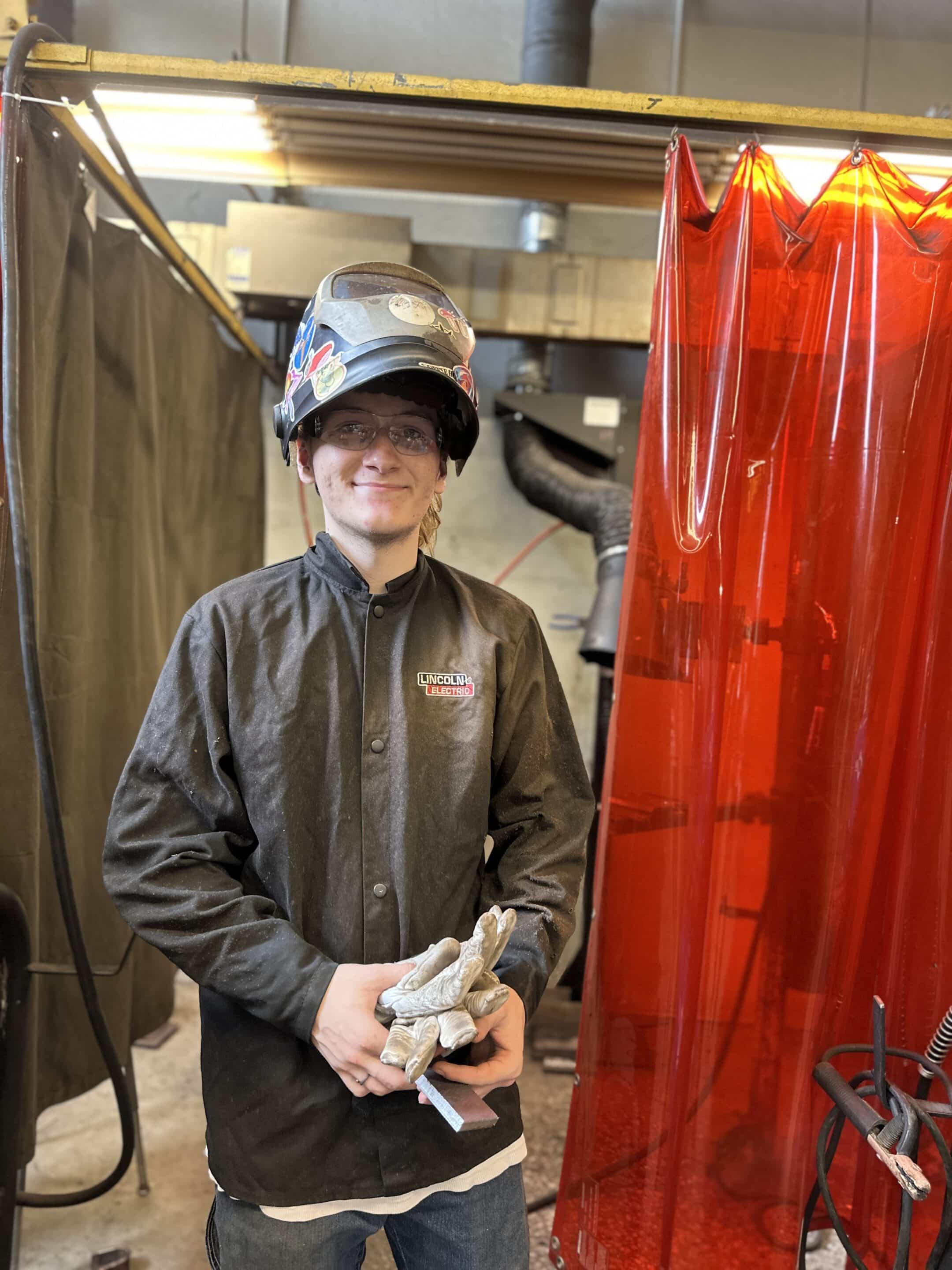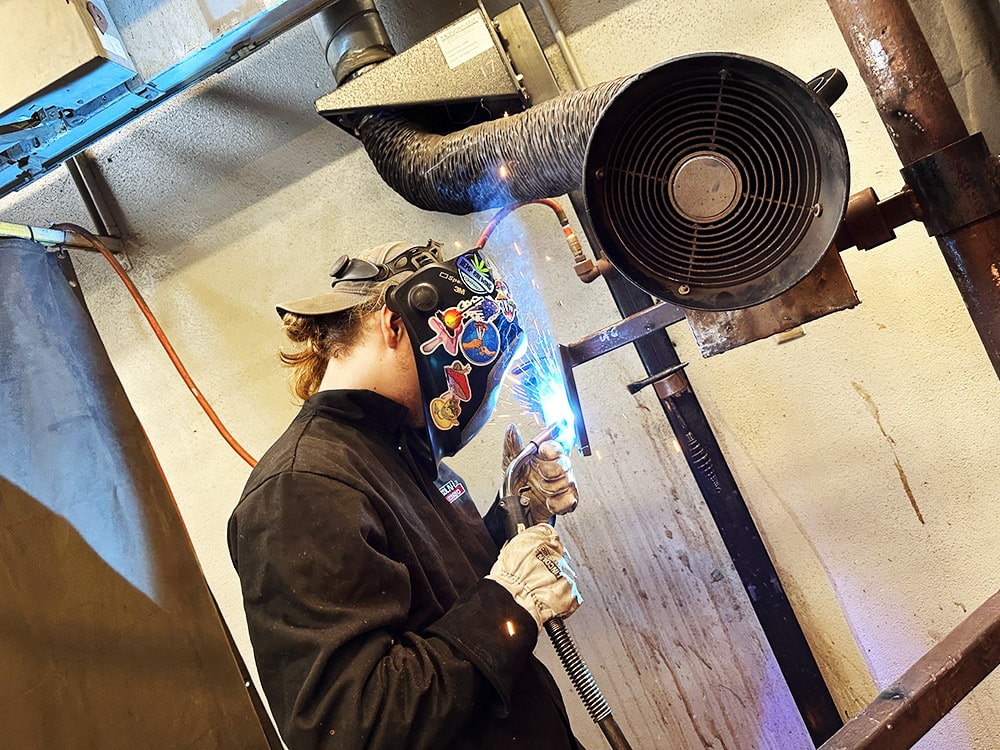Eighteen-year-old Mason Fisher was not your typical high school senior. Each day, at 5:30 am, he shouldered the weight of his future career as he walked to his bus stop. Among his essential tools were a hefty 20-pound tool bag, a protective helmet, and a flame-resistant jacket, which he paid for with his part-time salary.
Fisher’s early morning journey was part of his participation in Pinellas County’s dual enrollment program, which offers eligible high school students the opportunity to earn elective credits towards their high school diploma, a career technical certificate, and a degree program.

Mason Fisher, student in Pinellas County’s dual enrollment program
While enrolled in Pinellas Technical College (PTC) – St. Petersburg Campus, Fisher’s senior year put him on a career pathway in welding technology. Once Fisher completes the program, he plans to become a certified Flux Core Arc professional and work in the fabrication, repair, or construction industry.
As Florida continues to expand its population and the need to rebuild aging infrastructure increases, Fisher’s welding expertise will keep him busy.
“I can’t sit down for too long. I get all antsy. I like to do stuff with my hands; that’s why I’m here,” Fisher said.
According to U.S. Bureau of Labor Statistics projects, there will be approximately 47,600 job openings annually for welders and similar experts over the next decade. Once Fisher is ready, his entry-level wage in Florida can be as high as $46,000 a year, depending on the employer, according to Indeed. If Fisher chooses, he can pursue more industry certifications to increase his salary; otherwise, Fisher’s career and income growth will be limited by the very nature of his craft.
Dual enrollment programs expand access to college-level coursework for middle and high school students who might not otherwise have the opportunity to experience college-level classes. Research shows that when students attain education beyond high school, there are significant benefits. According to the 2022 Florida TaxWatch Report, workers with high quality credentials or postsecondary degrees receive higher wages, enjoy better health, and contribute more to their communities.
Download Florida College Access Network’s The Case for Dual Enrollment: Access, Benefits, and Opportunities to learn more.
Dual enrollment is an acceleration program that affords high school students multiple opportunities to pursue career pathways while reducing the expense of obtaining a certification or credits that can count towards a degree. The school district pays for tuition and textbooks.
“If we can expose kids at an earlier age, as juniors and seniors, then they can get an early start on a career path,” said Christopher Blackwell, a recruiter at PTC.
Many students enrolled in the dual enrollment program at PTC rely on financial assistance. This program appeals to those residing in low-income communities who aim to fulfill their high school requirements while simultaneously preparing for their future careers. Qualified students can choose from a range of disciplines varying from welding technology to practical nursing and cosmetology. But not all curriculums are the same.

Mason Fishers welds inside the Pinellas Technical College’s Welding Technologies workshop.
Upon high school graduation, most students must re-enroll as adult students to complete their program and pass the tests required to earn a career certification. For students who are interested in pursuing an academic degree, dual enrollment serves as a bridge.
Certain course hours completed can be used as transferable credits within the Florida College System and State University System. In this way, dual enrollment provides a non-traditional pathway that leads to career and college readiness while also alleviating the financial burden associated with higher education.
Some students leverage dual enrollment to enter certificate programs that leads directly into a career pathway—Fisher’s next step, for instance, is to apprentice with the steelworker’s union. Others view use dual enrollment as a stepping stone into two- or four-year degree programs.
